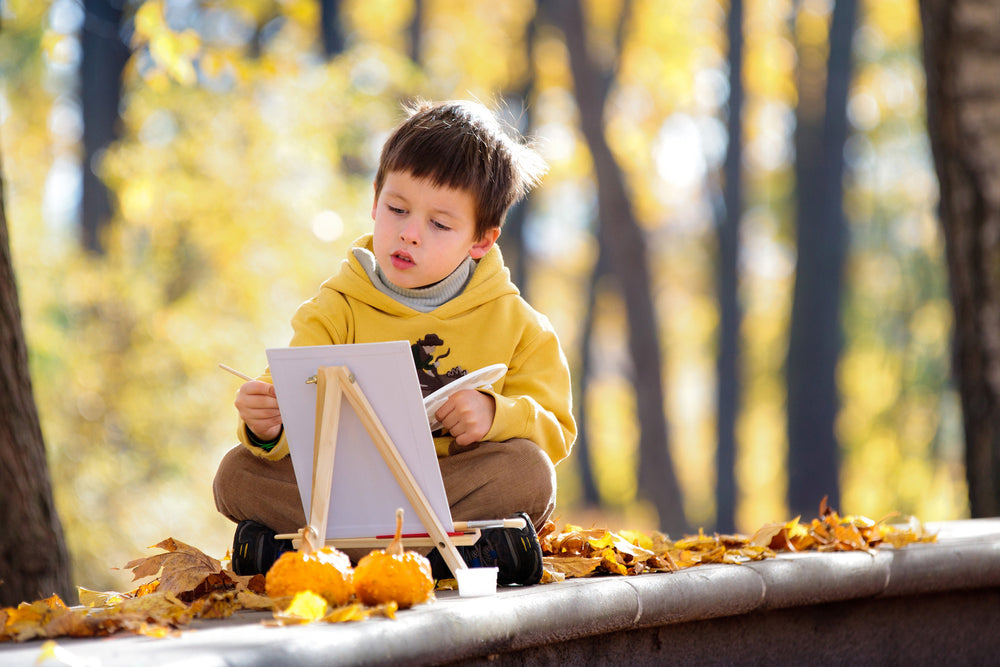Four Halloween Play Activities with Recycled Crafts


This post was co-published with our 'Play It Forward' partners, Second Chance Toys.
Hooray for Halloween! The holiday of sweet treats, spooky tricks, and costumes sparked by the imagination—no wonder it’s a favorite for all ages to enjoy! As you and your children prepare for the festivities, use this holiday for more than just collecting candy. Halloween is a great opportunity to discuss the importance of recycling, and then put it into action with these fun craft projects that transform old objects and materials (like, all those candy wrappers) into new creative treasures. Ahead, we share four recycling-based art projects that celebrate the Halloween spirit, promote skill building, and celebrate upcycling.

This project is an effective, simple way to introduce your child to recycling. Start by encouraging your little one to save odds and ends that are typically discarded, including bottle caps, paper towel rolls, juice boxes, candy wrappers, and so much more. These open-ended materials are ideal for imaginative play, as they can be transformed and defined by the child’s imagination.
Once your child has a plentiful collection of recycled materials, invite him or her to make a collage by gluing them to a piece of cardboard or canvas. As they create from the unknown, this form of “process art” helps children develop a range of important skills, such as innovation, planning, problem solving, and fine motor development.
When their sculptural collage is complete, let it dry for at least 24 hours. Once the glue has set, your child can paint over the top of their 3-d collage using orange and black paint to create a festive, monochrome collage with a Halloween twist.
Materials needed: recycled materials, canvas or cardboard, paint, paintbrushes

Never throw out your toilet paper rolls again! Believe it or not, toilet paper rolls are the perfect recycled material for countless craft projects, and this one promotes storytelling and literacy skills! This Halloween, turn your old cardboard rolls into fun characters or animals, then start narrating new adventures with your little one.
Get started by reading a Halloween-themed book with your children. Ask them about the character details that they notice. Create a list of those features together. When the story is complete, encourage kiddo to decorate their cardboard tubes to bring their own characters to life. Whether you reenact the story you just read or create a new plot from scratch, your child’s cardboard characters pave the way for practicing their reading, writing, and narrative skills.
Materials needed: toilet paper rolls, recycled materials, markers, paint, confetti (optional), googly eyes (optional)
Candy Wrapper Origami:

If your home looks anything like mine after Halloween night, your floor is covered in candy wrappers! Instead of tossing them, use all those colorful wrappers to practice origami, the art of paper folding! This engaging, focused activity helps children hone their fine motor ability and practice perseverance. Check out this list of fun shapes and figures that your child can create using nothing more than their hands and upcycled wrappers. Happy folding!
Materials needed: candy wrappers (or found papers) in various patterns and colors.
Cardboard Haunted House:

Cardboard boxes are one of my favorite open-ended materials for imaginative play. They allow children to create their own space in which they can enact their pretend worlds. Maybe a cardboard box is a space shuttle flying to the moon, a castle with a dragon inside, or a corner café with the best milkshakes in town.
This Halloween, invite your child to make their own haunted house! First, collect a large cardboard box (ideally large enough for your child to climb inside). Then set up a station of open-ended materials to inspire their imagination: markers, paints, stickers, recycled odds and ends (caps, plastic bottles, aluminum foil), pipe-cleaners, buttons—go for it! Assist your youngster (or help guide an older child) to cut out a door and windows using a box cutter. As they work, support their imaginative process by offering open-ended questions. These prompts invite more than “yes” and “no” responses. Try these: “What do you think you might see if you went inside a haunted house,” or “Imagine what it might feel like to live in a haunted house.” Open-ended comments help children create a narrative for their play experience. They also allow them to maintain control over their own creative process, which supports intrinsic motivation and independence.
Materials needed: cardboard box, cardboard scraps (for roof/details), box cutter, variety of open-ended materials for decorating.
Recent Articles
-
Playful Primer 10 Must-Have Toys for Your Next Backyard BBQ
Summer is just around the corner and we're ready for it! From backyard BBQs to neighborhood park outings, we've discovered...
read more -
Playful Primer Tips & Toys to Support Group Play Experiences
Catching a glimpse of children happily engaged in pretend play is like witnessing pure magic. Ever wonder how closely you...
read more -
Playful Primer 5 Ways to Strengthen the Bond Between Siblings
“I’ll take care of the bike. You take care of each other.” This is what I said to my children...
read more
